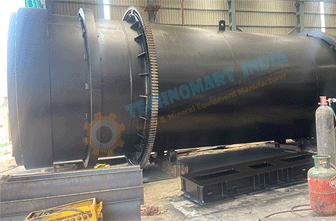A plug-in rotary kiln is a specialized variant of the rotary kiln, designed to enhance thermal contact and improve process efficiency for drying, calcining, or heat-treating bulk materials. Each "plug" or batch of material progresses gradually with minimal mixing in a plug flow rotary kiln because the materials flow through the kiln in a pattern similar to a plug. These kilns typically feature advanced burner systems, optimized refractory linings, and automated control mechanisms to improve thermal efficiency and reduce energy consumption.
The plug flow regime is particularly desirable for processes requiring precise control of residence time and temperature exposure, such as calcination, roasting, or pyrolysis, because it ensures that all material particles experience similar thermal histories. This flow pattern enhances process efficiency, product uniformity, and predictability, making plug flow rotary kilns widely used in cement, lime, chemical, and waste treatment industries


